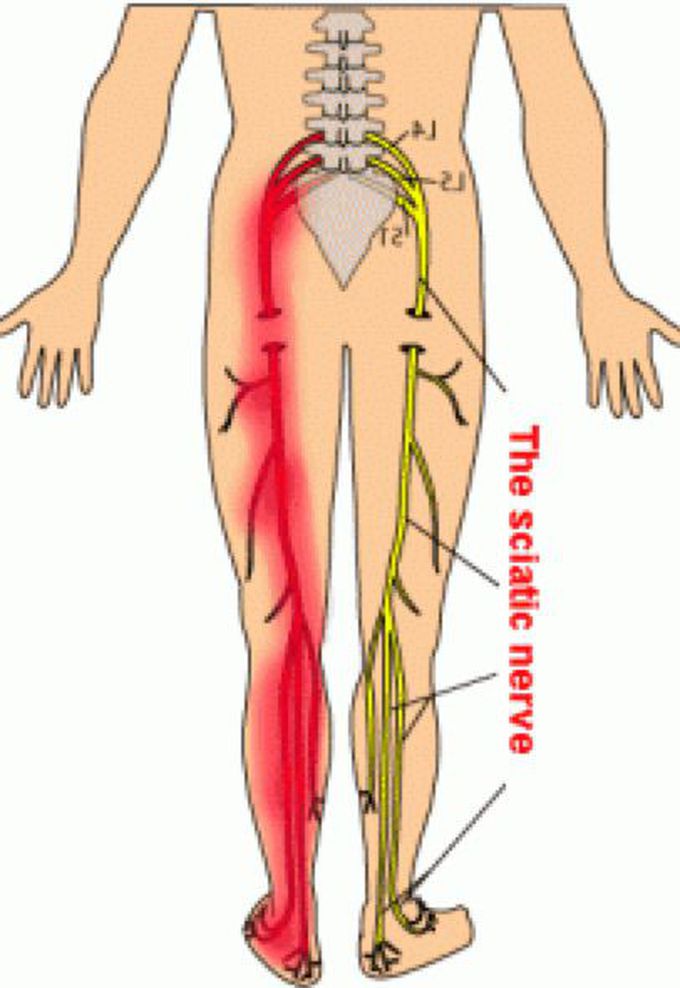

Sciatica
What is sciatica?Sciatica, also called lumbar radiculopathy, is a pain that originates along your sciatic nerve. This nerve extends from the back of your pelvis down the back of your thigh. Your sciatic nerve is the main nerve in your leg. It is also the largest nerve in your entire body.What causes sciatica?Usually, sciatica is caused by a herniated (or bulging) disk in your spine that presses on your sciatic nerve.Other reasons for pressure on your sciatic nerve may include:ObesityPoor postureTumorAbscessBlood clotAwkward sitting positionAny nerve disordersSometimes, the cause for your sciatica cannot be identified.What are the symptoms of sciatica?These are the most common symptoms of sciatica:Lower back pain that radiates or spreads down your buttock and the back of one thighPain that extends from your buttock down to your footNumbness (in severe cases)Weakness (in severe cases)The symptoms of sciatica may look like other conditions or medical problems. Always see your healthcare provider for a diagnosis. How is sciatica diagnosed?Along with a complete medical history and physical exam, tests for sciatica may include:X-ray. Electromagnetic energy beams make images of internal tissues, bones, and organs onto film.Magnetic resonance imaging (MRI). Large magnets, radiofrequency energy, and a computer make detailed images of organs and structures in your body.Electromyography and nerve conduction study (EMG and NCS). A procedure done together to record and analyze electrical impulses in your muscles. During the EMG, thin needles are placed in your muscle to record electrical activity. The NCS is often done along with the EMG to determine if a nerve is working normally. Electrodes are then placed in various locations on your skin along the nerve pathway. When stimulating the nerve at various places, your healthcare provider can then determine the specific site of your injury.What is the treatment for sciatica?Sciatica usually heals on its own with rest and time. To help relieve the pain, treatment may include:Nonsteroidal anti-inflammatory (NSAIDS) medicines such as ibuprofenHeat or cold applied to the sore musclesMovement (keeping your body in motion minimizes inflammation)Osteopathic manipulationSurgery (to repair your herniated disk, if the condition persists)What are the complications of sciatica?Because sciatica is caused by pressure on a nerve in your spine, complications may develop if the pressure is not relieved. Possible complications of unrelieved nerve compression include:Increased painA slipped or herniated discLoss of feeling or weakness in your affected legLoss of bowel or bladder functionPermanent nerve damageWhen should I call my healthcare provider?Call your healthcare provider if:Your pain worsensYou lose feeling in your affected leg, or notice weakness in your legYou develop problems with your bowels or bladderYour pain returns after successful treatment of your sciaticaKey points about sciaticaSciatica most commonly occurs in people between the ages of 30 and 50 years.It is pain that starts along your sciatic nerve and spreads down your buttock and the back of 1 thigh.It is usually caused by a herniated (or bulging) disk in your spine that presses on your sciatic nerve.Sciatica usually heals on its own with rest and time.

